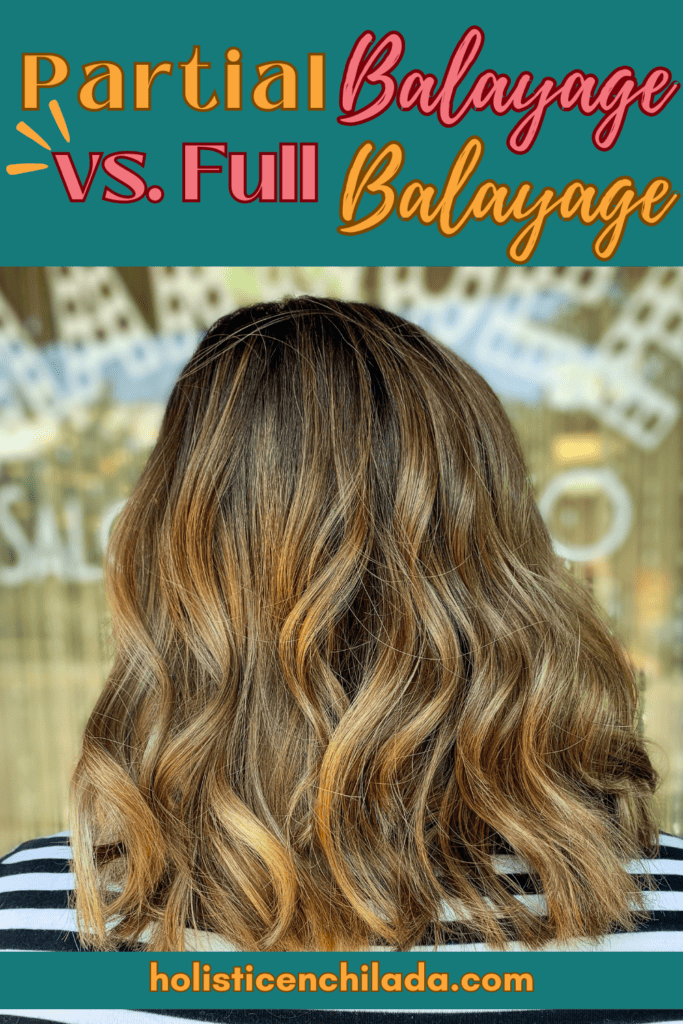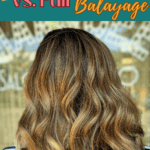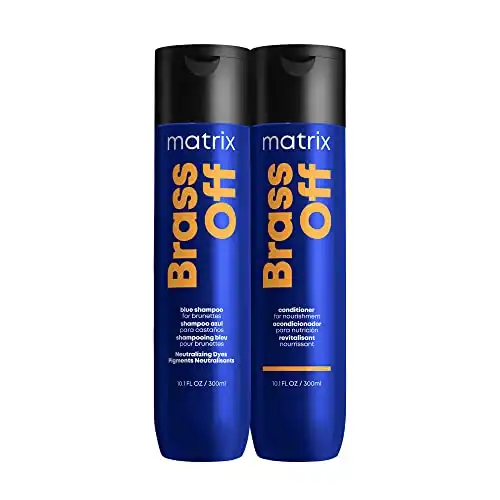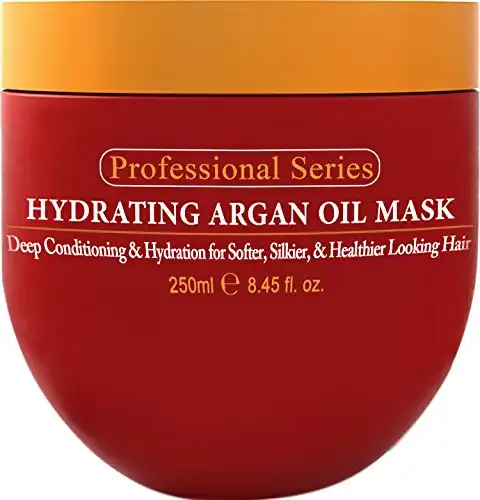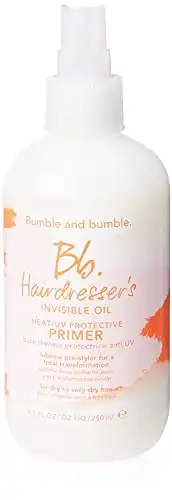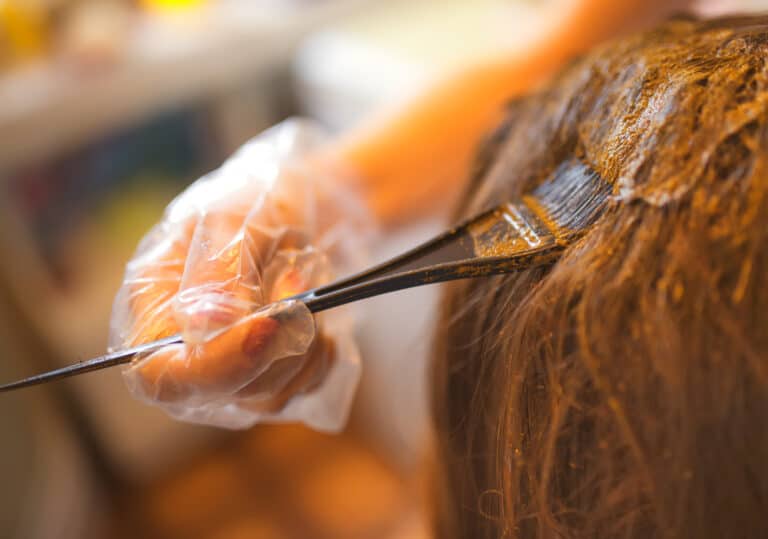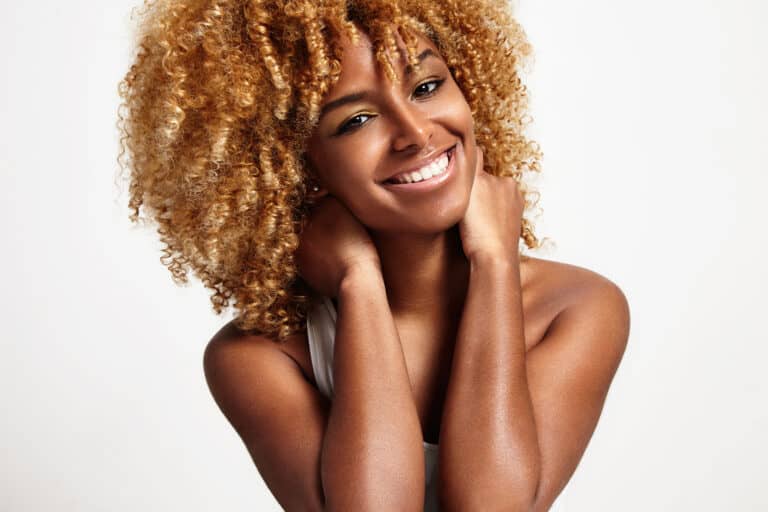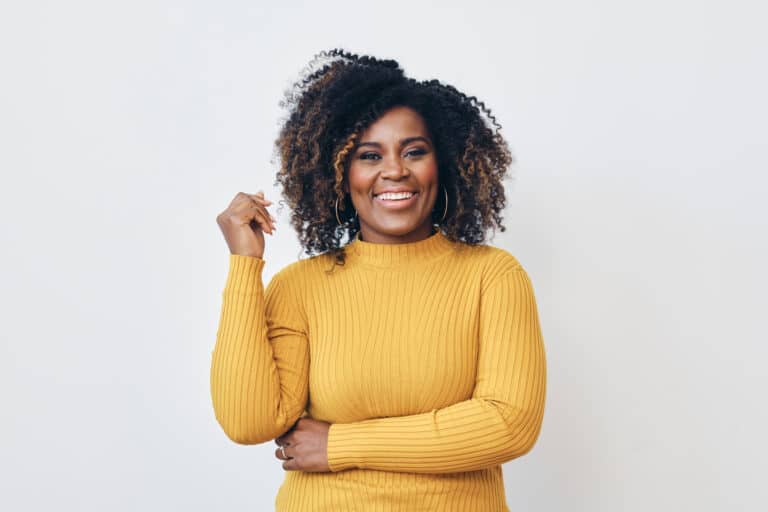Partial Balayage vs Full Balayage – How to Know Which Is Right
This post may contain affiliate links, and I will earn a commission if you purchase through these links. Please read the disclosure policy for more details.
Whether you want to add golden blonde highlights to dark blonde hair or spice up dark locks with cinnamon or red highlights, balayage is a popular way to lighten hair.
This hair coloring technique gives a stunning, natural-looking effect that causes less chemical damage than traditional highlights, and many stylists now offer partial balayage as well. Understanding the difference between partial balayage vs full balayage can help you to decide which technique to choose.
In this guide, we’ll look at the differences between the techniques and the pros and cons of each one. We’ll also share some tips to help you keep your balayage highlights looking gorgeous for longer.
Partial Balayage vs Full Balayage – What Are They?
Traditional balayage is a hand-painting hair coloring technique that gives natural-looking highlights.
The stylist paints individual sections of your hair with a bleaching solution, which allows the look to be customized to suit your face shape. The contrast between your natural hair color and the balayage highlights will give the impression of thicker, more voluminous hair.
This also means that the color won’t leave an obvious line as your hair grows, so you can leave it longer before your next appointment.
What Is a Full Balayage
If you opt for a full balayage, your stylist will hand-paint the bleaching solution along the entire length of strands across your whole head, leaving the roots untouched. This gives a sun-kissed effect but without the harsh regrowth lines and frequent maintenance associated with traditional highlights.
Because the lightener is applied across your full head of hair, not just to the top layers, a full balayage can give you a dramatic change of color. Your base color will still show through, giving you a full head of gorgeous multi dimensional tones.
What Is a Partial Balayage
Partial balayage means creating face-framing partial highlights and lightening the ends of your hair, and the upper layer around your crown.
If you’re nervous about having your hair highlighted for the first time, the subtle change of a partial balayage is an ideal first step. This color technique is also easy to maintain or grow out.
What’s the Difference?
If you’re unsure whether to choose a full or partial balayage, here are the key differences between the two techniques.
Coverage
Full and partial balayage both lighten the areas of the hair that the sun would touch. But a full balayage will lighten everything except the roots, while a partial balayage will only highlight certain areas like your hair’s ends and top layer.
Application time
As you’d expect, a full balayage is more time-consuming than a partial balayage. The exact time will depend on how long and thick your hair is, but you can expect your appointment to take around three to four hours. If you choose a partial balayage, you will probably spend around an hour in the salon.
Cost
In general, you can expect a partial balayage cost to be less than full highlights. Depending on the salon’s location and how experienced your stylist is, you could spend around $300 to $500 on full balayage or about $100 to $200 on partial balayage.
Maintenance
Both balayage styles are fairly low maintenance, but you will need more frequent hair appointments to maintain a full balayage.
The Balayage Application Process
Whether you have full or partial highlights, the balayage technique is gentler on your locks than traditional foil highlights.
Your hairdresser will paint the bleach solution onto specific sections of your tresses instead of totally saturating your strands in the solution. This also means that your stylist can more easily customize the look to suit your face shape, hair color, and hair texture.
After applying the color, your stylist usually sits you under a heated dryer while the color processes. Next, your hair will be rinsed and then conditioning treatments and toners will be applied to perfect your color and leave your locks shiny.
The length of your salon visit will depend on factors like your hair length and how many levels you want to lighten your hair. But you should reckon on spending at least an hour in the salon for partial balayage and up to four hours for the full technique.
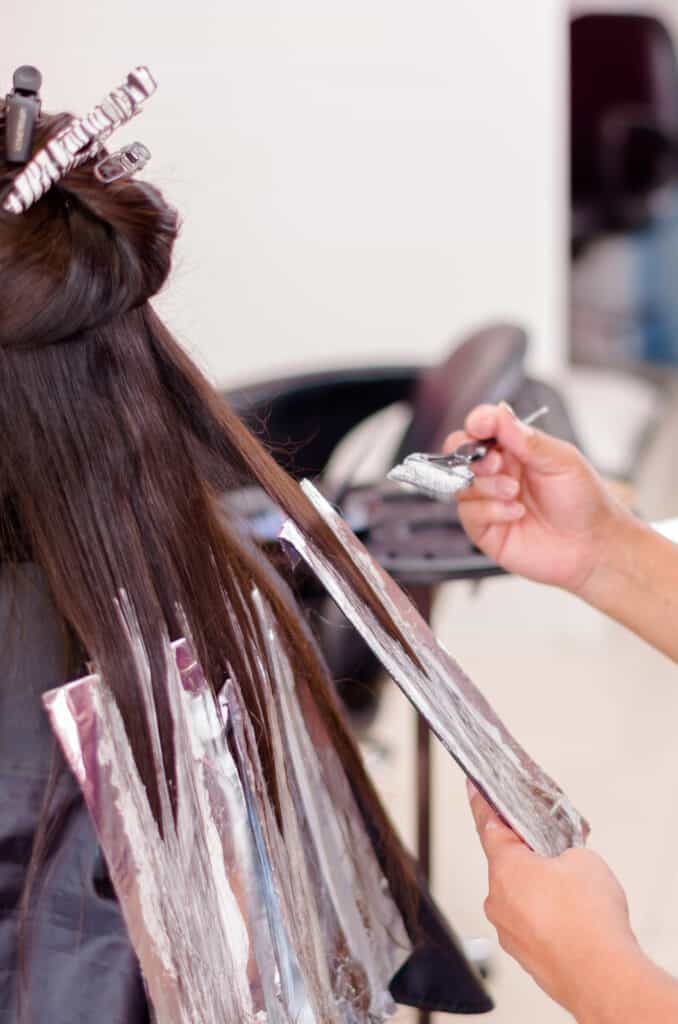
Partial vs. Full Balayage Pros and Cons
Full balayage and partial balayage both give a beautiful, natural look and cause less damage to your hair than foil highlights. So how do you choose which one is right for you?
Considering the advantages and disadvantages will help you make your decision:
Full Balayage
This technique has become one of the most popular ways to highlight hair in recent years.
Pros
- Classic balayage highlights can give you a noticeable change of color, but the balayage technique is still subtle enough to look natural.
- Your stylist can customize your look to suit your hair’s style, type, and texture.
- This technique is ideal if you want to take your hair color a few shades lighter or cover gray hair.
- Full balayage is less harsh than foils, as the strands aren’t saturated in the bleaching solution.
- Regrowth is less obvious than with foil highlights, so you will only need to touch up a full balayage every 12-14 weeks, compared to 4-6 weeks for foilyage.
Cons
- Full balayage lightens more hair than partial balayage, so you should expect to spend up to four hours in the salon chair.
- This also makes the treatment more expensive than a partial balayage, costing around $400 to $500 on average.
- Although you can leave several months between touch-ups, you will still need to bear in mind the cost and time involved in these appointments.
Partial Balayage
The subtle style of partial balayage can be an ideal way to try out a new look before upgrading to the full process.
Pros
- Partial balayage lightens less hair than full balayage, so there’s less risk of chemical damage.
- Applying a partial balayage takes less time, making it easier to fit into your busy schedule.
- Partial balayage is less expensive, costing around $100 to $200 on average.
- Most of your mane will still be your natural color, so the subtle highlights will look softer.
- Regrowth looks less obvious with a partial balayage, so you can leave it longer than 12 weeks before topping up your highlights.
Cons
- You can’t achieve a dramatic color change with the partial balayage process.
- Regular salon appointments will still be needed, so you need to factor in the time and expense of maintaining your look.
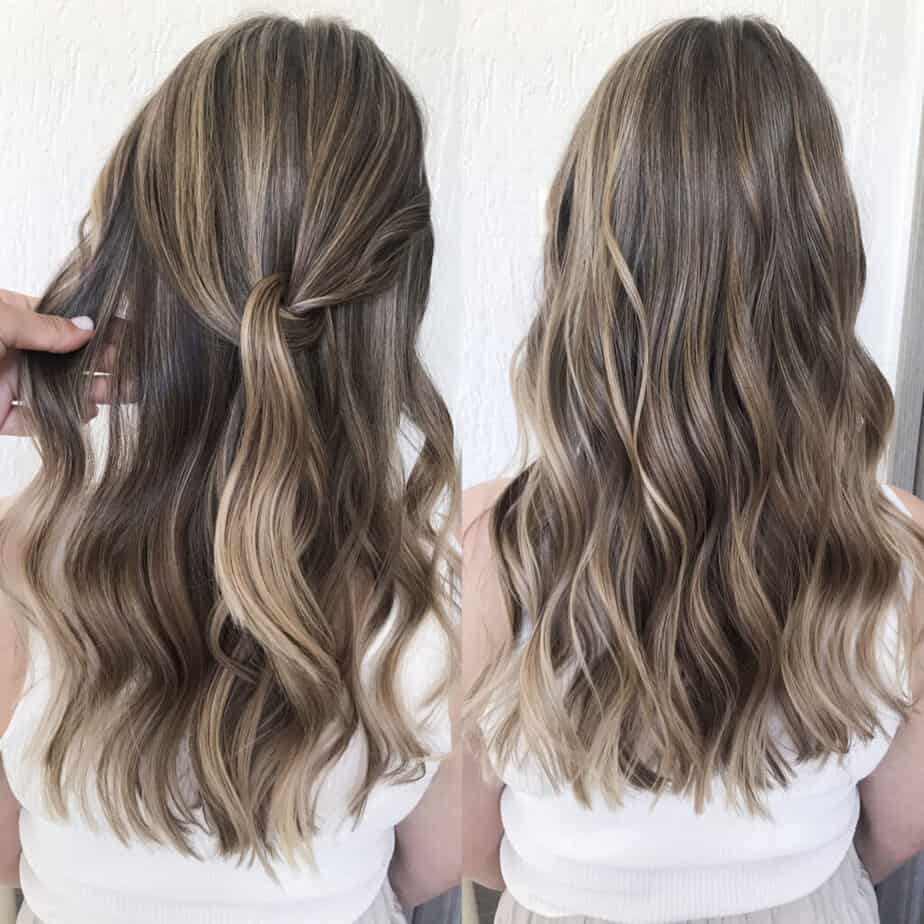
How to Choose Between Full and Partial Balayage?
Full balayage and partial balayage can both give you beautiful results. Choosing the right option for your hair will depend on several factors:
When to Choose Full Balayage
Full balayage gives you a dramatic color change without lightening your roots. Opt for full balayage if:
- Frequent salon trips aren’t a problem.
- You can afford the cost of your color treatment.
- You want a bright, sun-kissed look.
When to Choose Partial Balayage
Partial balayage brightens your hair without dramatically changing the color. Choose partial balayage if you want:
- A subtler change of look, especially on virgin hair
- Less damage to your hair
- Less time in the salon
Tips For Making Your Balayage Last
These simple steps will help keep your color looking great for longer:
Minimize heat
Blow drying and using heated styling tools will fade your color and leave your locks feeling dry. It’s best to air dry your hair and avoid hot tools like curling wands, but if this isn’t possible, apply a heat protectant first and fit a diffuser to your blow dryer.
Minimize washes
Shampooing your hair will strip color out of your strands and can also make your hair drier. So try to leave longer between washes to keep your color looking fresh.
When you shampoo your hair, rinse it with cool water to stop the color from washing out. And use a microfiber towel or cotton t-shirt to dry your hair, rather than rubbing your locks with a cotton towel.
Choose high-quality hair care products
Look for sulfate-free, color-friendly hair products to keep your color vibrant and your hair shiny. Purple or blue toners and shampoos can also help reduce brassy undertones.
Hydrate with hair masks and deep conditioners
The chemicals that your stylist uses to lighten your hair will dry out your tresses, which can leave your hair brittle and prone to breaking. Hair masks and deep conditioning treatments can help to restore moisture to your color-treated locks.
Limit sun exposure
Sun exposure will fade your color and leave your hair feeling dryer, so avoid sun exposure to keep your balayage looking fresh.
Balayage vs Highlights
Highlights are created by saturating sections of hair with bleach and wrapping each in foil to develop. The size, placement, and number of sections determine how bold the effect is, and curly hair highlights often leave a harsh line where the unbleached root begins.
On the other hand, balayage gives a more natural, sun-kissed effect, thanks to the hand-painted technique. It’s easier for your stylist to customize the look to suit your preferences, and balayage is more gentle on your locks. This makes it more suitable for dry and damaged hair.
Partial Balayage vs Full FAQs
If you’re considering a partial or full balayage, these frequently asked questions will help you get the perfect look to suit your personal style.
Is a Balayage the Same as an Ombre?
These are similar techniques, but the sectioning processes are different, which gives different results.
Ombre gives you a gradual vertical change from light to dark or vice versa, while balayage will give you a more blended finish. Although there will be some graduation of color, it won’t be as striking as the graduated color of an ombre.
Does Balayage Damage Hair?
All chemical processing can cause some damage to your hair, but balayage is gentler on your hair than traditional foil highlights or an all-over color. That’s because the color is hand-painted onto specific areas, and the technique also needs less frequent maintenance.
Does Balayage Work for Every Type of Hair?
Balayage works well on pretty much every hair type and can be customized to suit straight, wavy, or curly hair.
However, the technique works best on hair that’s at least chin-length, as the results don’t show up so well on short hair. And if you have dark hair, you might need more than one session to achieve your desired outcome.
Partial Balayage vs Full Balayage – The Bottom Line
Both of these options give you a low-maintenance, natural-looking result with less damage than traditional foil highlights. Although there are a few differences, like the cost and the length of your salon visit, these two techniques are pretty similar.
Your main decision is whether you prefer the more dramatic color change that full balayage gives or the more subtle look of a partial balayage. Whichever you choose, it’s essential to visit a skilled colorist who can tailor the technique to suit your hair and give your desired look.
